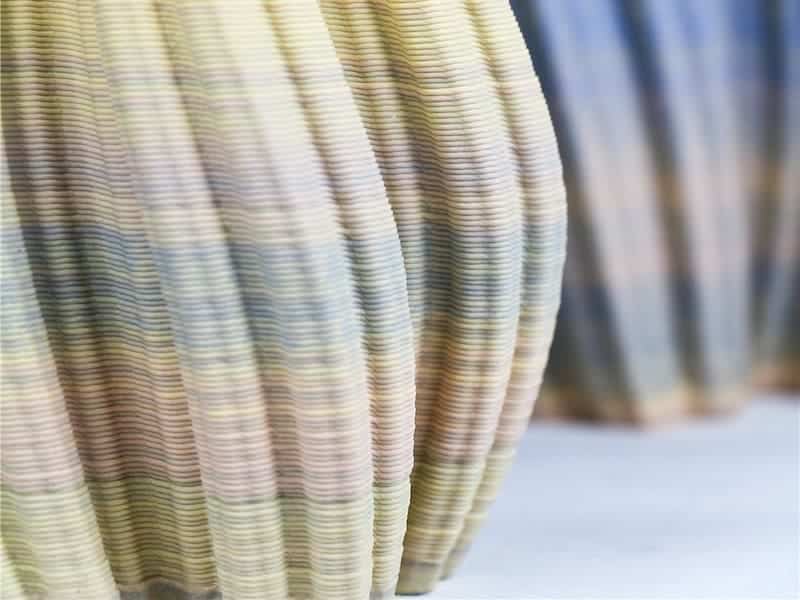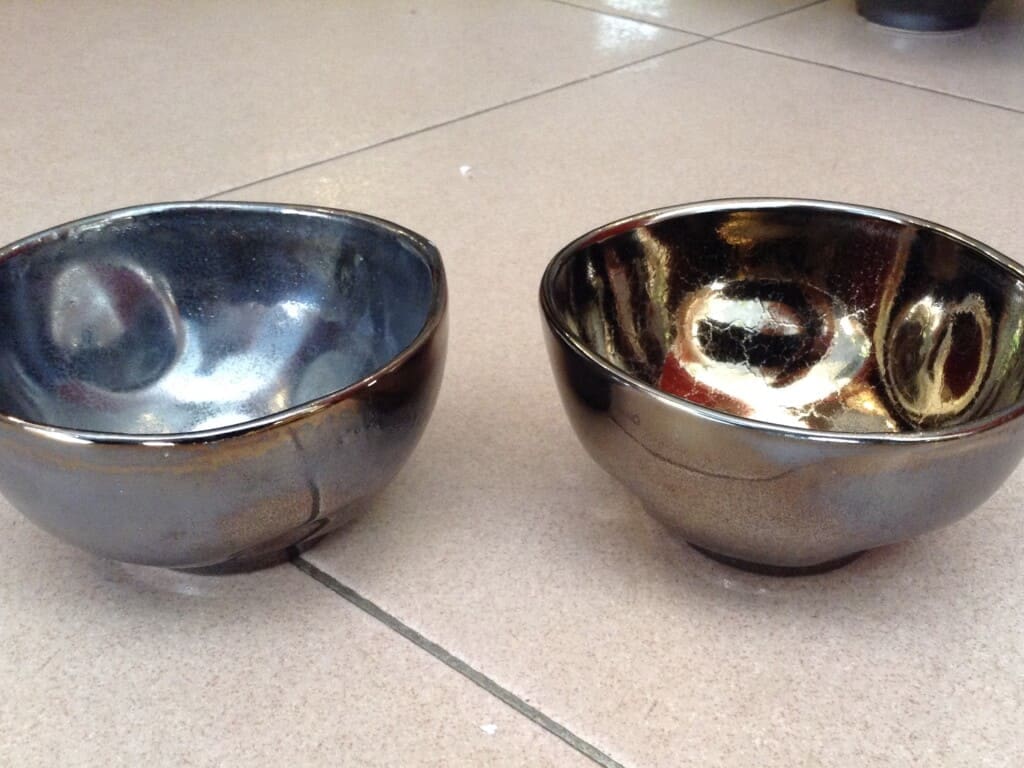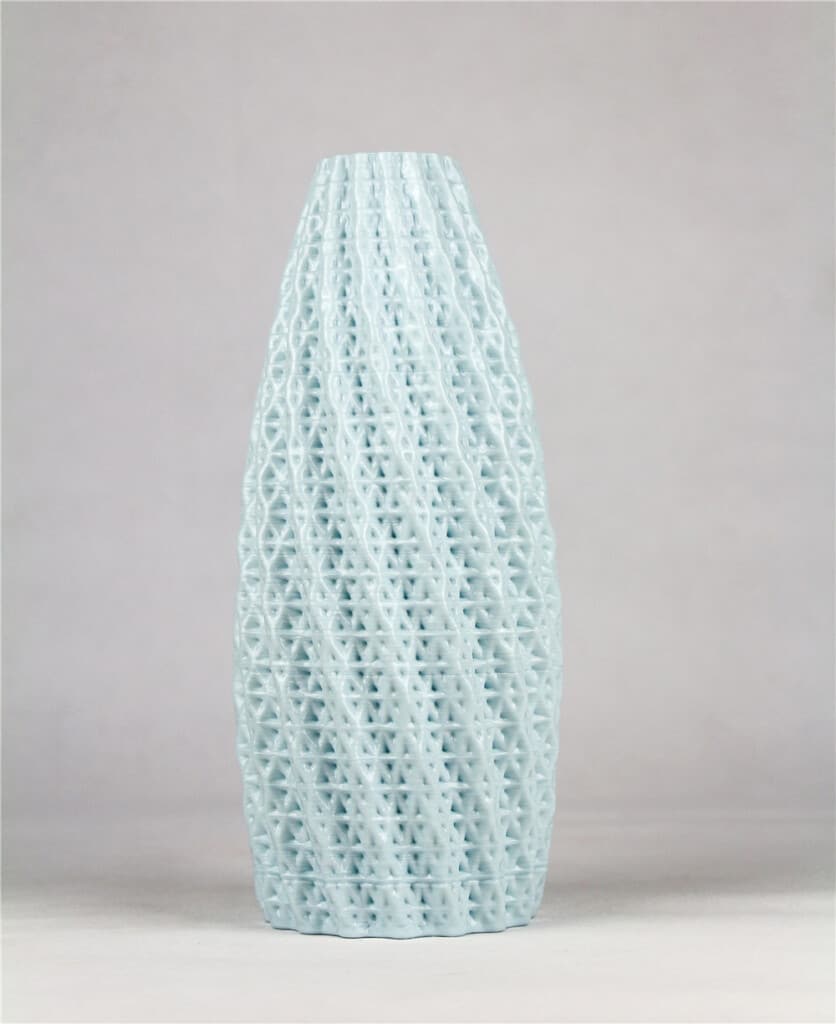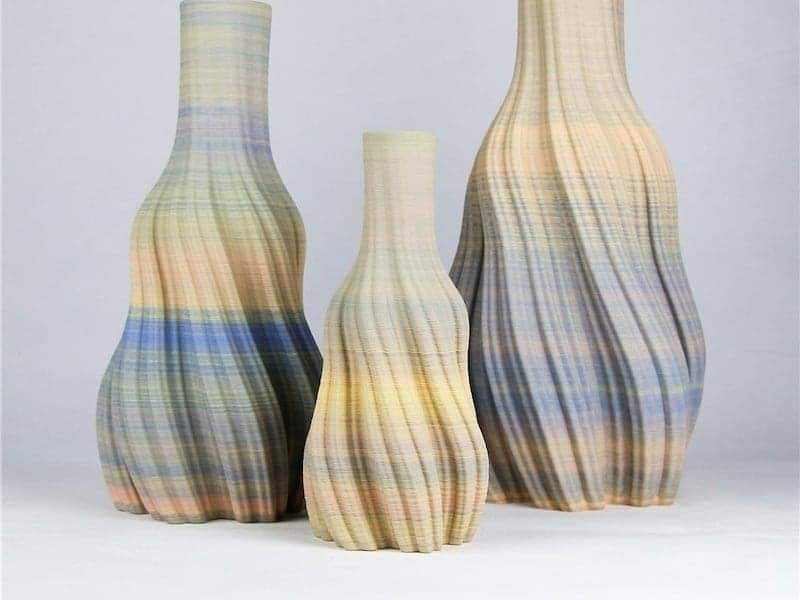Manufacturing earthenware, stoneware, and porcelains area an extremely technical kind of manufacturing. To fire all these kinds of materials, you need to understand a lot about the kiln and the correct firing temperature.
If a ceramic piece is not fired at the correct temperature, it will greatly affect the final product’s outcome. It is also important that the correct kiln is used for the production process. This is because many things must be considered when using a kiln to fire ceramics. Many things can cause the final product to fail or crack during the firing process.
Table of Contents
- All About A Ceramic Kiln
- All about Firing Ceramic Products
- Related Questions

All About A Ceramic Kiln
To understand why the firing temperature will affect the final product, we must first understand what a ceramic kiln is. The best way to describe a ceramic kiln is a giant oven that will bake your ceramics just like you would bake a cake in your home oven.
The technical definition of a ceramic kiln is:
“A thermally insulated chamber, a type of oven, that produces temperatures sufficient to complete some process, such as hardening, drying, or chemical changes.”
wikipedia
Some form of ceramic kiln has been used for 1,000s of years. These kilns have turned various objects made by clay into pottery, tiles, or bricks.
Some forms of manufacturing may still use kilns that are heated by a wood source or fire. Usually, I have seen wood or fire kilns in factories that need to have the wood or fire to get the finish they desire or due to the clay, they are using. But most kilns today use gas or electricity as their heat source. The reason is that this is usually safer and more economical.
Today there are so many ways kilns are built. That is why just the kiln itself to fire your ceramics can be extremely technical.
Whatever the kiln’s heat source, a kiln must be able to high-fire the clay at temperatures sufficient enough and even enough so that a clay reaction will occur and the body of the clay will be permanently altered into a hardened state.
But not all kilns are created equal; some kilns will work better than others. Here are a few things to remember about a kiln:
- Temperatures – The kiln must be able to fire extremely high temperatures safely. For example, porcelain should fire at 1200C (2190F) to 1400 C (2550F). Due to these very high temperatures, porcelain is scratch-resistant and extremely hard.
- Unequal heat in kiln- Not all kiln heat is the same unless you have an extremely high-tech kiln where they have worked to get the kiln as equal as possible.
- Placement in kiln- Since the heat in most kilns can be a bit unequal, even just a few degrees or less for some finishes can affect the color finished or hardness of the product. This is why we say that ceramic production is very complicated.
If you are interested in finding out more about the firing temperatures for different clay types, you can read our blog Earthenware, Stoneware, and Porcelain Materials by clicking here.

All about Firing Ceramic Products
Just forming the shape in the clay is not enough. Once that shape has been formed, then the clay must be fired. The firing of the clay can change the clay in a lot of profound ways. Essentially during firing, the clay goes from a soft, fragile substance to one that is rock-hard and solid.
Introduction to Understanding Clay and the Kiln Firing Process
Exploring the world of ceramics uncovers the fascinating interplay between clay and the kiln firing process, two fundamental aspects that bring pottery to life.
From the malleable nature of clay and its transformational journey through different firing stages to understanding the crucial temperatures and atmospheres within the kiln, this guide offers insights into the art and science behind creating beautiful ceramic pieces.
Whether you’re a budding potter or simply curious about the process, this overview will provide you with a foundational understanding of how raw clay becomes a finished, durable product through the transformative power of firing.
Here are some things to understand about clay and the kiln firing process:
Bone-Drying in the Atmosphere
After the clay is formed, it is almost always dried to become what is known as bone-dried. Bone-dry is defined as:
“Bone dry (adjective) is a term used to describe and identify greenware pottery that has dried as much as possible before it has gone through its first firing (the bisque firing). When held, bone dry greenware feels to be at room temperature, not cool to the touch.”
The Spruce Crafts
I can tell you from first-hand experience that pottery is still very fragile at this stage. It will break into pieces if you do not pick the pottery up correctly. The clay may be dried, but the pottery has not yet gone through the process to be changed through the firing process.
Making the clay bone-dry is just the first step in the firing process. The clay is now shaped and bone-dried. Bone-dry the clay by leaving the clay out for at least a few days or, in some cases, longer. The idea is to get the clay to be as dry as possible.
A few things about bone-dried clay:
- Bone-dry – Completely dried out unfired clay.
- Brittle and fragile – The clay is still very brittle and fragile in this state. It needs to be handled as little as possible.
- Usually lighter – The color will change, and the clay is lighter than in the moist state.
- Can not add anything – Nothing can be added except careful scratching or polishing once the clay is bone-dry.
- Difficult to re-wet – At this point, it is difficult to re-wet and to re-work the piece. But if you carefully rewet it evenly over the entire piece, sometimes you can rework it a bit. This is why making any changes before the clay is bone-dry is best. If you made a mistake, it is usually easier to start over than to re-wet a bone-dried piece.

Once the clay is fully bone-fried, it can be put in the kiln to be fired. Once it is in the kiln, several changes take place.
Fire to Burn Off the Carbon and Sulfur
You must fire the clay to burn off the carbon and sulfur content in the clay. All clay will have some carbon and sulfur that must burn off in the firing process. Carbon or black coring can occur if this cannot burn off properly. This is generally not desirable as it will weaken the structure of the clay.
Carbon coring or black coring happens when:
“A gray or black layer under the surface of a fired clay piece. Carbon or black coring is undesirable, as it makes the piece weaker, can discolor glazes, and is associated with bloating.”
Flye school
Carbon coring can happen if the firing is too fast or the kiln is poorly ventilated, so there is not enough oxygen in the kiln. Black or grey coring happens when the carbon and sulfur will strip away any red iron from the clay body, turning it into a black color.
Water Needs to Be Taken Out – Quartz Inversion.
Clay can still have close to 14% of water after it is considered to be bone-dried. When the clay is fired, the water needs to be able to escape from the clay. But if the water is taken out too quickly, it can cause steam inside the clay. This will essentially break the clay pieces in the kiln. Quartz Inversion is when the water is taken out too quickly.
Expansion and Contraction of Clay-Dunting
When the clay is heated up, it can temporarily expand in size to about 1- 2% during the heating process, and then it will contract to about 1-2% during the cooling process. If the ceramic is heated or cooled too quickly, it will cause the pottery to crack. This kind of cracking is called dunting. You can identify dunting cracks as the ceramic piece is usually warped, and the cracked edges will not fit together.
Clay Partials Sticking Together – Sintering
Another thing that happens in the kiln is that the clay particles will start sticking or fusing together. They call this process clay fusing sintering. During sintering, the clay stops becoming clay but becomes a ceramic or porcelain material.
Fired to Mature or Vitrify Structure
A mature and vitrified structure is when the clay is fired so that it is hard enough to be used. Mature means that you have fired the clay to a tight, hard, and serviceable kind of structure.
On the other hand, Vitrify is similar to mature, but not the same; for a lump of clay to vitrify means that it is fired to the point of glassification or turned more into a glass-like substance. Porcelain is fired at such a high temperature, so it is considered vitrified.
There are many ways that the kiln firing process will affect the production of earthenware, stoneware, and porcelain materials that are used in ceramic production. The kind of kiln you use and how the piece is fired can make a huge difference in the final ceramic product’s outcome.
Find out more about how Mondoro can help you create, develop, and manufacture excellent home decor and furniture products – don’t hesitate to contact me, Anita. Check out my email by clicking here or become a part of our community and join our newsletter by clicking here.
Mondoro gives out a FREE Lookbook to anyone interested. You can receive a copy of our latest Lookbook by clicking here.
Listen to our Podcast called Global Trade Gal. You can find it on all major podcast platforms. Try out listening to one of our podcasts by clicking here.
Subscribe to our Mondoro Company Limited YouTube Channel with great videos and information by clicking here.
Related Questions
What is the PVD Stainless Steel Coating Used On Home Decor Products?
The PVD stainless steel coating is another kind of product that must be heated to be applied. PVD coatings are very thin yet highly durable coatings that can be placed on many different kinds of substrates, including stainless steel. A vacuum chamber with very high temperatures is used to apply the PVD coating. Though this finish is used a lot in the tech, medical and aerospace industries, it is also used for manufacturing home decor and home furniture products.
To find out more about the PVD stainless steel coating, you can read our blog on What is the PVD Stainless Steel Coating Used On Home Decor Products? by clicking here.
What is the Mother of Pearl Shell Used in Home Decor Products?
Mother of pearl, which is also known by the scientific name of nacre, is a pearl layer on the inner layer of the oyster shell that is used in home decor. This pearl layer of the oyster is literally taken off the outer oyster shell. The leftover inner pearl shell is cut into various small shapes and sizes to then be glued onto various home decor products as mirrors, boxes, trays, and lamp bases.
To discover more about mother of pearl you can read our blog What is the Mother of Pearl Shell Used in Home Decor Products? by clicking here.

